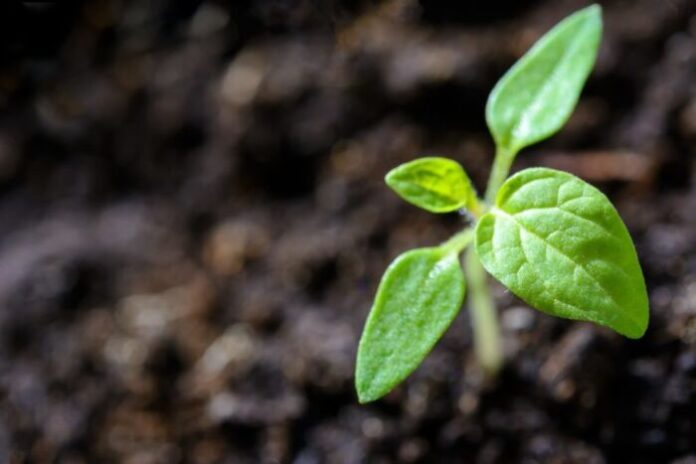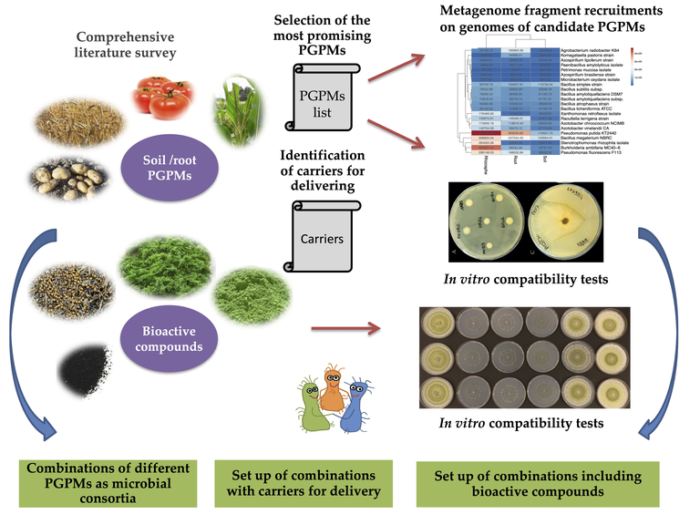
Repaire the Earth with the help of ‘beneficial’ microbes, able to improve yield and quality of crops, but also to counteract the impoverishment of soils, reclaim contaminated land and reduce the use of water, fertilizers and pesticides. On the occasion of World Earth Day 2021, focused on “Restore Our Earth”, ENEA presented the results of three projects that involve the use of communities of microorganisms, for the sustainable regeneration of soils. To date, in fact, about 1/4 of the earth’s surface has already been damaged and every year over 24 billion tons of fertile soil are lost, causing the loss of productivity of about 25% of the global surface.
A very serious damage considering that over 25% of the world’s biological diversity is preserved in the soil and the life cycle of over 40% of living organisms is linked to the soil.
ENEA researchers have developed communities of beneficial microbes, almost ‘cocktails’ of bacteria and fungi, bringing together plant growth promoting microorganisms (the so-called Plant Growth Promoting Microorganisms, PGPMs) selected following a systematic review of literature and their ability to coexist in vitro. These activities, the results of which have been published in the journal Microorganisms – MDPI, took place within the SIMBA project, funded by the Horizon 2020 program. The combination of microbial consortia with natural bioactive compounds (protein hydrolysates of plant origin, selected in the study ) and the use of suitable soil improvers (identified within the project) will allow to increase soil fertility and improve yield and quality of crops.
“These multifunctional microbial consortia represent a sustainable alternative to the use of conventional pesticides and fertilizers, as they are able to perform various functions, including nitrogen fixation and phosphorus solubilization in soils, promoting plant development and strengthening the resilience of the soil to stress ”, underlines Annamaria Bevivino, Head of the ENEA Laboratory of Sustainability, Quality and Safety of Agri-food Systems. “The experiments in greenhouses and in open fields carried out even in the absence of water and with different levels of fertilization, have given promising results on tomato, corn and wheat crops, with productions comparable to those obtained with commonly used fertilizers”, he adds. she.
But not only. Microbe communities can give concrete help for crops in the semi-arid and arid areas of the Mediterranean (Italy, Jordan, Cyprus, Greece and Algeria) as demonstrated by the EranetMed Supreme project, coordinated by the University of Cagliari, at the site of Al-Ghweir, Jordan. In this case, the ENEA researchers used strains from the rhizosphere of spontaneous local plants and the experimentation – carried out on barley, the main crop of the place – has shown that under water stress the bacteria are able to sustain their vitality and growth, acting as biofertilizers. .
“This approach, which we are also using in the field of open field experimentation still underway, focused on the biodiversity of the local soil, can be exploited for a dual purpose. On the one hand, to improve traditional agricultural production, damaged by the poor biogeochemical functions of the soils and by the intensive use of fertilizers and water resources, and on the other to promote innovative crops with high nutritional quality “, says Chiara Alisi of the ENEA Laboratory of Observations and measures for the environment and climate.

Finally, to ‘Repair the Earth’, plants and bacteria can be excellent allies for de-contaminating soils polluted by mining. This is the goal of some projects, including “Umbrella” and “SMERI”, conducted in the mining site of Ingurtosu (Sardinia), where ENEA researchers tested the effectiveness of soil remediation interventions through the association of plants and microorganisms, the so-called assisted phyto-rehabilitation. In order to avoid the dispersion of metals in the areas surrounding the mine and restore the normal functionality of the soils, the ENEA researchers have treated some soils – used as mine waste deposits – associating the endemic plant “Euphorbia pithyusa L.”, a bacterial consortium of autochthonous strains, selected among the most resistant to heavy metals and promoters of plant growth.
“This type of experimentation still in progress has demonstrated its effectiveness both in terms of improving microbial biodiversity and soil functions and increasing spontaneous vegetation”, underlines Giada Migliore of the ENEA Laboratory of Observations and Measurements for the Environment and the climate.
“This is why we hope for an ever greater use of the processes induced or produced by the associations between plants and microorganisms for the remediation of land contaminated by industrial activities, which cause drastic changes in the soil, altering its composition and self-regulation capacity and negatively affecting the functionality of the ecosystem and in the surrounding territories “. The activities conducted by ENEA at the Al-Ghweir and Ingurtosu sites were presented at the FAO Global Symposium on Soil Biodiversity.
ENEA with multi-year laboratories, infrastructures, skills and professionalism, also participates in the national soil research center (Soil-HUB of the Italian Soil Partnership) and supports the participation of our country in the Global Soil Partnership and in the European network of excellence on research on soil. soil (European Joint Program, EJP-SOIL [5]), with the aim of preserving the ecosystem functions of the soil and mitigating the impact of climate change on agricultural systems.



































